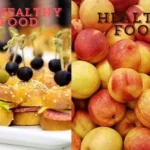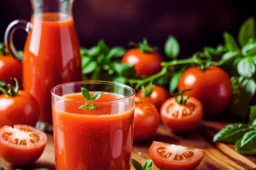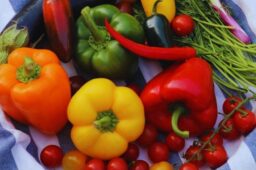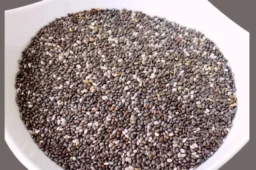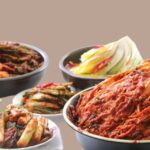High protein plant based meals
High protein plant based meals. In recent years, plant-based diets have gained immense popularity due to their numerous health benefits, environmental sustainability, and ethical considerations. One of the primary concerns for those transitioning to a plant-based lifestyle is ensuring adequate protein intake. Contrary to popular belief, it is entirely possible to meet your protein needs with a plant-based diet. This article explores the realm of high-protein plant-based meals, offering insights and delicious recipes to help you fuel your body the green way.
Understanding Plant-Based Proteins
Protein is an essential macronutrient responsible for building and repairing tissues, producing enzymes and hormones, and supporting overall health. While animal products are well-known protein sources, many plant-based foods are rich in protein and can provide all the necessary amino acids, especially when consumed in variety.
Key plant-based protein sources include:
- Legumes: Lentils, chickpeas, black beans, and other legumes are protein powerhouses, providing about 15-20 grams of protein per cooked cup.
- Nuts and Seeds: Almonds, chia seeds, hemp seeds, and sunflower seeds are excellent sources of protein, with varying amounts ranging from 5-10 grams per serving.
- Whole Grains: Quinoa, farro, barley, and brown rice not only supply protein but also essential nutrients like fiber and vitamins.
- Tofu and Tempeh: These soy-based products are versatile and high in protein, with around 15-20 grams per serving.
- Seitan: Made from gluten, seitan is a protein-rich meat substitute containing about 25 grams of protein per 3-ounce serving.
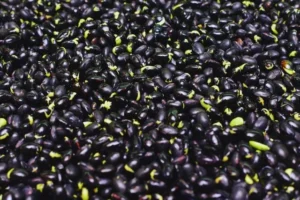
Benefits of High-Protein Plant-Based Meals
- Health Benefits: Plant-based proteins are generally lower in saturated fats and cholesterol compared to animal proteins. They are rich in fiber, antioxidants, vitamins, and minerals, which can help reduce the risk of chronic diseases such as heart disease, diabetes, and certain cancers.
- Sustainability: Plant-based diets have a smaller environmental footprint. Producing plant proteins requires fewer resources, such as water and land, and generates lower greenhouse gas emissions compared to animal farming.
- Ethical Considerations: Many people choose plant-based diets to align with their ethical views on animal welfare and to avoid contributing to animal cruelty.
Delicious High-Protein Plant-Based Meal Ideas
- Chickpea and Quinoa Salad
1 cup cooked quinoa
1 can chickpeas, drained and rinsed
1 cup cherry tomatoes, halved
1 cucumber, diced
1/4 cup coarsely chopped red onion
1/4 cup fresh parsley, chopped
2 tablespoons olive oil
1 tablespoon lemon juice
Salt and pepper to taste
- In a large bowl, combine the quinoa, chickpeas, cherry tomatoes, cucumber, red onion, and parsley.
- Drizzle with olive oil and lemon juice.
- Season with salt and pepper, then toss to combine.
- Serve chilled.
- Lentil and Vegetable Stir-Fry
Ingredients:
– 1 cup cooked lentils
– 1 bell pepper, sliced
– 1 carrot, julienned
– 1 cup broccoli florets
– 1/2 cup snap peas
– 2 tablespoons soy sauce
– 1 tablespoon sesame oil
1 teaspoon grated ginger
2 cloves garlic, minced
1 tablespoon sesame seeds
Instructions:
- Heat the sesame oil in a big skillet over medium heat.
- Add ginger and garlic, sauté for 1 minute.
- Add bell pepper, carrot, broccoli, and snap peas, stir-frying for 5-7 minutes.
- Stir in cooked lentils and soy sauce, cooking for another 2-3 minutes.
- Before serving, sprinkle with sesame seeds.
3. Tofu Scramble
Ingredients:
– 1 block firm tofu, drained and crumbled
– 1 tablespoon olive oil
– 1/2 cup onion, diced
– 1 bell pepper, diced
– 1 cup spinach, chopped
– 1 teaspoon turmeric
– 1/2 teaspoon garlic powder
– Salt and pepper to taste
Instructions:
- In a big skillet over medium heat, warm the olive oil.
- Add the pepper and onion and sauté until soft.
- Stir in crumbled tofu, turmeric, garlic powder, salt, and pepper.
- Cook for 5-7 minutes, then add spinach and cook until wilted.
- Serve warm, optionally with toast or in a wrap.
4. Black Bean and Sweet Potato Tacos
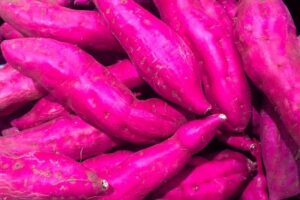
One big sweet potato, chopped and skinned
– 1 can black beans, drained and rinsed
– 1 tablespoon olive oil
– 1 teaspoon cumin
– 1 teaspoon chili powder
– 1/2 teaspoon paprika
– Salt and pepper to taste
– Corn tortillas
– Fresh cilantro, chopped
– Lime wedges
Instructions:
- Preheat oven to 400°F (200°C).
- Toss sweet potato cubes with olive oil, cumin, chili powder, paprika, salt, and pepper.
- Spread on a baking tray and bake for 25-30 minutes until tender.
- In a skillet, heat black beans until warmed through.
- Assemble tacos with sweet potatoes, black beans, cilantro, and a squeeze of lime.
Tips for Maximizing Protein Intake
- Combine Protein Sources: Pairing different plant-based proteins, such as beans and rice, ensures a complete amino acid profile.
- Incorporate Protein-Rich Snacks: Snack on nuts, seeds, or protein bars made from plant ingredients.
- Utilize Plant-Based Protein Powders: Add protein powders to smoothies, oatmeal, or baked goods for an extra protein boost.
- Plan Balanced Meals: Ensure each meal contains a source of protein, healthy fats, and complex carbohydrates.
What Are 3 Plants High in Protein?
Three plants that are notably high in protein are:
- Lentils: As mentioned, one cup of cooked lentils contains about 18 grams of protein.
- Chickpeas: One cup of cooked chickpeas provides around 15 grams of protein.
- Edamame: One cup of cooked edamame offers approximately 17 grams of protein.
How to Get 100 Grams of Protein on a Plant-Based Diet?
Achieving 100 grams of protein on a plant-based diet can be straightforward by combining various protein-rich foods throughout the day. Here’s a sample plan:
- Breakfast:
Tofu Scramble with spinach and nutritional yeast: ~20 grams of protein.
Smoothie with pea protein powder, almond milk, and chia seeds: ~20 grams of protein.
- Lunch:
Quinoa Salad with chickpeas, edamame, and vegetables: ~25 grams of protein.
- Snack:
Hummus with carrot sticks and celery: ~10 grams of protein.
- Dinner:
Lentil Stew with seitan and vegetables: ~25 grams of protein.
Conclusion
High-protein plant-based meals are not only possible but also delicious and nutritionally adequate. By incorporating a variety of plant-based protein sources, you can meet your dietary needs while enjoying a diverse and flavorful diet. Whether you’re motivated by health, environmental sustainability, or ethical reasons, transitioning to a plant-based lifestyle offers numerous benefits. Embrace the power of plants and discover the joy of high-protein, plant-based eating.

